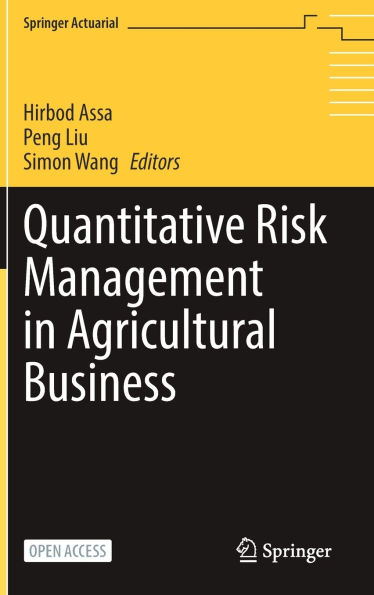Evolving challenges in risk management have called for the development of new, groundbreaking models. Beyond presenting the theoretical foundations of these models, this book discusses their real-world applications, providing tangible insights into how innovative modeling can elevate risk management strategies in the agricultural sector.
The latest risk management tools incorporate novel concepts such as index insurance, price index risk management frameworks and risk pools. The practical implications of these approaches are investigated, and their impact on contemporary agricultural risk mitigation and insurance practices is examined. Field experiences illustrate the implementation of these tools and their resulting outcomes.
Modern data analysis techniques in agricultural risk and insurance include machine learning, spatial analysis, text analysis, and deep learning. In addition to scrutinizing these ideas, the authors introduce an economic perspective towards risk, highlighting areas that have developed thanks to technological progress. Examples illustrate how these combined methodologies contribute to informed decision-making in agriculture, and their potential benefits and challenges are considered.
This carefully compiled volume will be a valuable reference for researchers, practitioners, and students intrigued by the dynamic intersection of agricultural risk management and insurance practices.
Evolving challenges in risk management have called for the development of new, groundbreaking models. Beyond presenting the theoretical foundations of these models, this book discusses their real-world applications, providing tangible insights into how innovative modeling can elevate risk management strategies in the agricultural sector.
The latest risk management tools incorporate novel concepts such as index insurance, price index risk management frameworks and risk pools. The practical implications of these approaches are investigated, and their impact on contemporary agricultural risk mitigation and insurance practices is examined. Field experiences illustrate the implementation of these tools and their resulting outcomes.
Modern data analysis techniques in agricultural risk and insurance include machine learning, spatial analysis, text analysis, and deep learning. In addition to scrutinizing these ideas, the authors introduce an economic perspective towards risk, highlighting areas that have developed thanks to technological progress. Examples illustrate how these combined methodologies contribute to informed decision-making in agriculture, and their potential benefits and challenges are considered.
This carefully compiled volume will be a valuable reference for researchers, practitioners, and students intrigued by the dynamic intersection of agricultural risk management and insurance practices.

Quantitative Risk Management in Agricultural Business
332
Quantitative Risk Management in Agricultural Business
332
Product Details
| ISBN-13: | 9783031805738 |
|---|---|
| Publisher: | Springer Nature Switzerland |
| Publication date: | 04/01/2025 |
| Series: | Springer Actuarial |
| Pages: | 332 |
| Product dimensions: | 6.10(w) x 9.25(h) x (d) |
